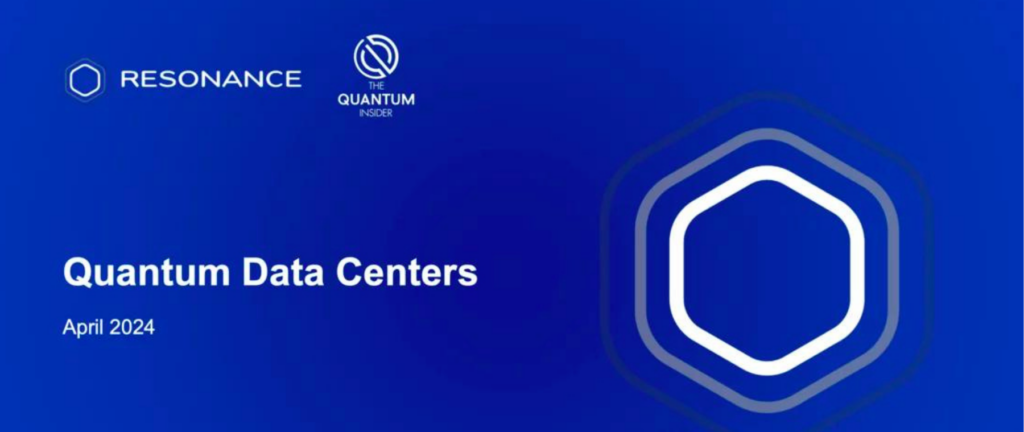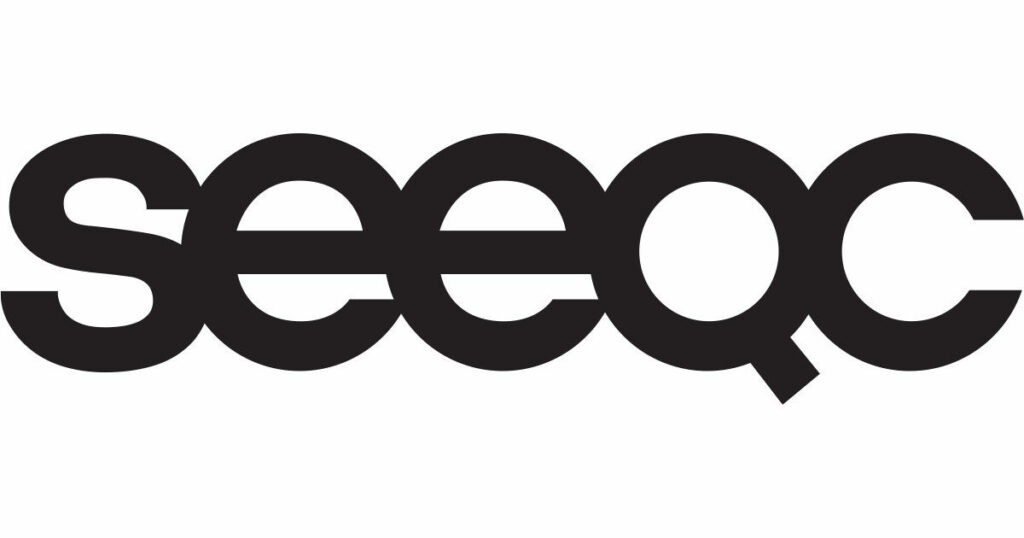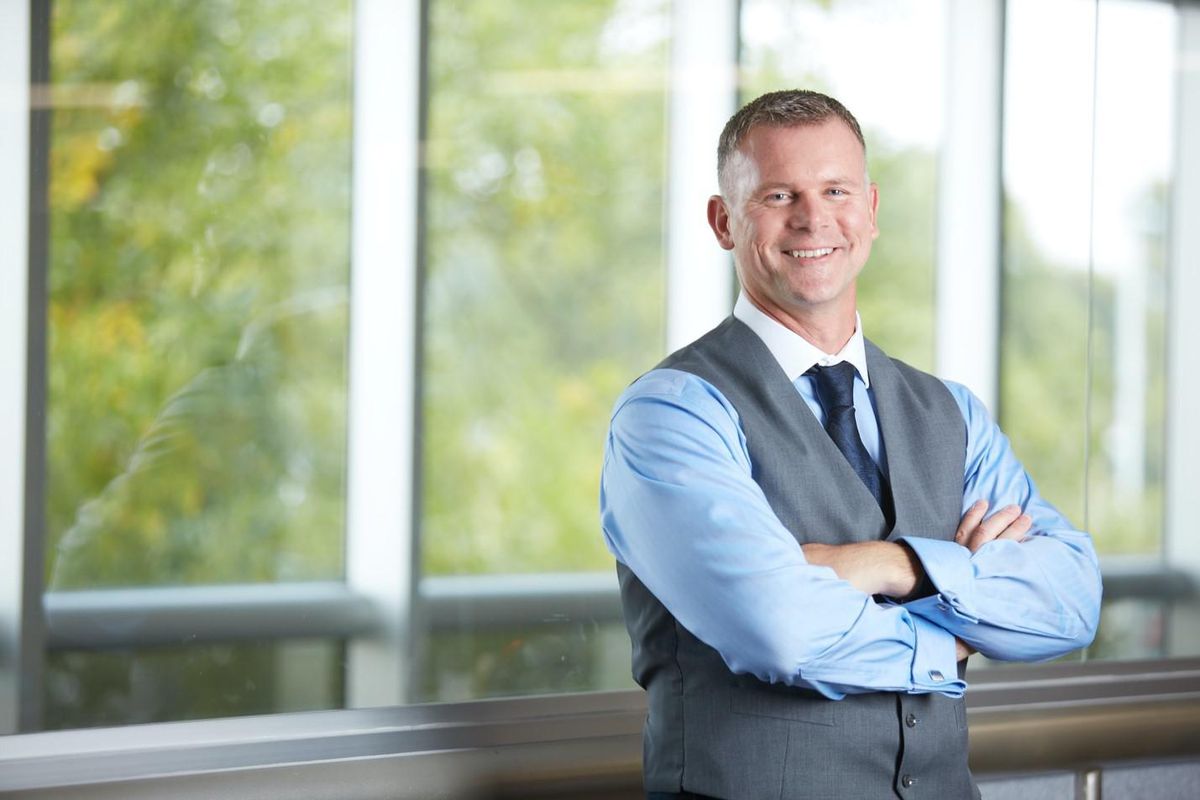
TQD spoke to Tony Uttley — President of Honeywell Quantum Solutions — about the department’s inception and roadmap, quantum charge-coupled architecture, commercializing quantum solutions, hype, and the underlying ethics
About Tony and the birth of Honeywell Quantum Solutions
Tony started his career at NASA where he worked as a mechanical engineer at the Johnson Space Center. Following his tenure at NASA, he joined the Boston Consulting Group (BCG) for 7 years. At BCG he was a Principal, developing and executing go-to-market strategies to accelerate the launch of sophisticated engineered products for companies. Finally, in 2010, he made his way to Honeywell and has been there ever since.
At Honeywell, he was the head of marketing & global strategy when it was the largest division at the time, Automation & Control Solutions (ACS). Throughout his time at ACS he had a small group of scientists, both in the aerospace and ACS divisions reporting to him. These were experts in cryogenic systems, ultra-high vacuum systems, photonics, RF (radio-frequency) magnetic systems, and ultra-high precision control systems. After some time he became interested in what they were working on and what he found was marvelous.
These scientists had set up an ideal environment to facilitate the building of quantum computers.
“At first, I was an absolute skeptic, but when I dove into it I understood what we could really do, I took it to the head of ACS, and then we took it to the head of the company and agreed we could actually do this.” – said Uttley
Honeywell Quantum Solutions began to set up technical milestones that they wouldn’t hit till late 2015. Things would be kept under tight wraps for the majority of the decade, so secret even a large majority of the company didn’t know what was going on. At the time, people didn’t know what a quantum computer was and those who did couldn’t understand why Honeywell would be involved.
It wasn’t until 2018 that Tony and his team would go public with their quantum operations. It had to be well understood that the underlying technology to build a quantum computer would make sense for Honeywell.
Building a quantum charge-coupled device (QCCD) architecture
On a secret path to launch their first commercial system in late June of 2019, the intent was to take on the massive amount of technical debt that would be required to trap ions in a QCCD. Their goal was to be able to physically move around qubits, which is very difficult because it takes an enriched amount of control expertise. They decided to build their system around an architecture where the operational zones were fixed. Where they could stabilize the qubits but then physically transport them from one place to another without causing them to heat up and eject themselves from the system, maintaining high fidelity was the most important in this architecture.
“Our entire organization’s thesis was centered around not just a universal fault-tolerant era but one that’s tied together, that allows us to have a trap geometry that we can shovel qubits across multiple zones of operation.” – said Uttley
To plan further development, they laid out a roadmap that included 4 pinnacle milestones over the coming decade.
- Model H1: Incorporates the same linear device such as the system of Model H0 but increases the number of available computational qubits to 10.
- Model H2: Using the same lasers to be able to do operations on one side of that racetrack as on the other side of the racetrack. At this stage, classical computations cannot remedy a quantum computer through simulations.
- Model H3: Allows them to take on geometries that force them to be able to turn corners with qubits.
- Model H4: Integrating optics, by manipulating photonic devices that have already been designed and built, to allow laser sources to be in an integrated circuit.
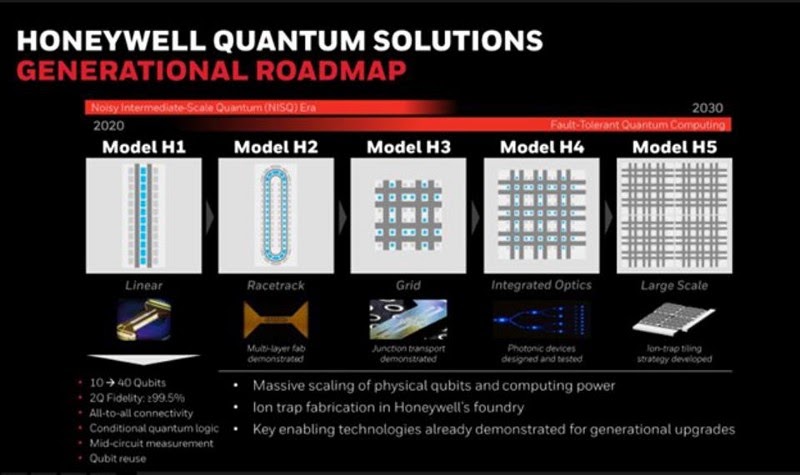
Along with the generational roadmap, the architecture would maintain the trap geometry but from a linear topology to a more complex design.

The QCCD architecture imbues their company thesis by allowing them to increase the capability of the system as they take the next step in their generational roadmap. In doing so, they claim they can create more value for their customers while maintaining the integrity of the system.
Full house solutions to welcome practicality
Honeywell’s wide range of facilities allows them to use their quantum computer for practical solutions. They excel in the areas of:
- Chemical, where they build catalysts that allow you to transform crude oil into different kinds of refined petrochemicals.
- Aerospace, where they optimize flight systems.
- Productivity solutions, where they are doing both in-house distribution optimization for warehouses as well as multiple distribution platforms.
From the players in the space to the stakeholders across the industry, their broad domain expertise and datasets allow them to start working on harnessing the commercial potential of this technology.

A common use case anticipated for quantum computing is to synthesize nitrogen so it doesn’t require massive amounts of energy. The process today takes almost 1% of the entire world’s supply of energy to make fertilizer. And the belief is, if you have a big enough quantum computer, that you can do the molecular simulation to figure out:
- How do plants do this?
- How do plants do this at room temperature?
- When will a breakthrough occur?
Now imagine somebody somewhere did that.
“How you have to implement that to actually make it practical in the world is somewhere you’re going to have to put in a gigantic petrochemical plant. And that petrochemical plant is going to have this new process in it, that new test is going to have to be very tightly controlled. You may require catalysts that you’ve built along the way that allow you to do that new process. That is what Honeywell does, our bread and butter of our company is being able to go do that.” – said Uttley
Honeywell is one of the few companies right now that has the capabilities to do this all in-house. They aim to be the one-stop quantum shop, from computation to delivery of an executed solution for a customer.
Navigating through the hype
It’s no secret that in the quantum community there are egregious statements about the applicability of quantum computers today, which can also lead to wasted injections of capital from investors. Tony believes that hype dilutes from the incredible tools they are today.
“What people forget, is that these are incredible tools already. What do I mean by that?… You’re simulating, not actually doing it on a quantum computer unless you are actually doing it on a quantum computer.” – said Uttley
Instead of hyping a fault-tolerant future, focus on the now. This industry is nearing the dawn of an “open blue sky” that will open doors, but patience must be practiced. For now, these claims are not helpful as they push further back that future.
Maintaining ethical thinking
“Whether it’s AI, machine learning, etc, as you develop these systems, these tools are going to be massively capable. With dual purposes, for good or bad. That is also a part of why we pay so much attention to who we are interacting with. This kind of complete anonymity of somebody somewhere using your system to do something that you don’t even know what they’re using it for runs a big risk. And so we continue to be very measured with who we are interacting with, what is our purpose, and how we shape how these things evolve. We’re not naive to the fact that there are multiple countries and companies involved in this that may have a different view than ours. And that’s fine. But as leaders in this space, we absolutely feel like we have an obligation to make sure that we’re doing the best as stewards of that responsibility.” – said Uttley
As more and more companies continue to deliver solutions with robust technologies it is imperative to remain focused on underlying ethics. All companies, including Honeywell, have the fiduciary duty to mitigate risk by paying attention to whom they work with and staying conscious of the ethical implications. Quantum computing could be a wonder to the world or it could be a nightmare and I doubt anyone wants to deal with the latter.














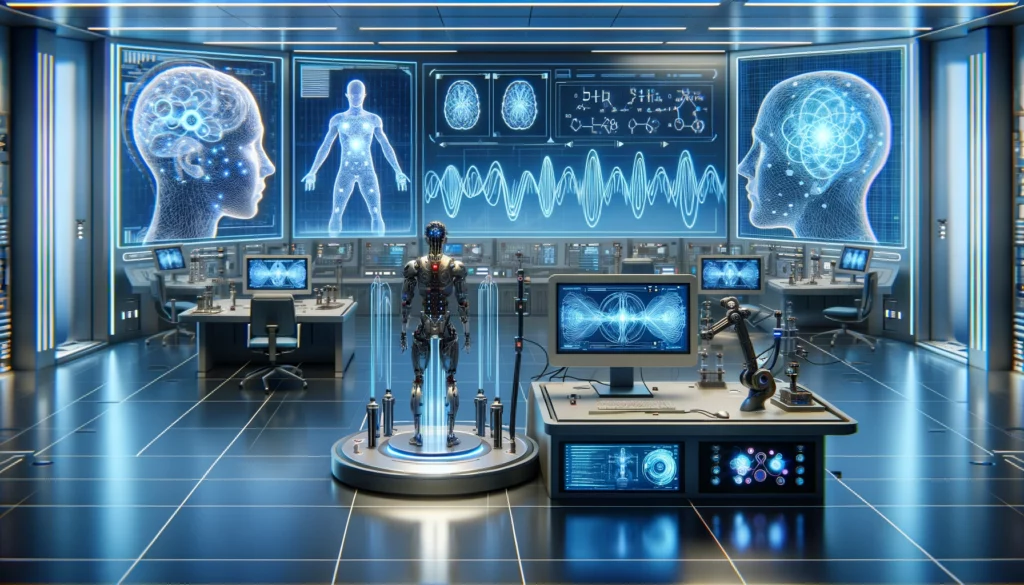
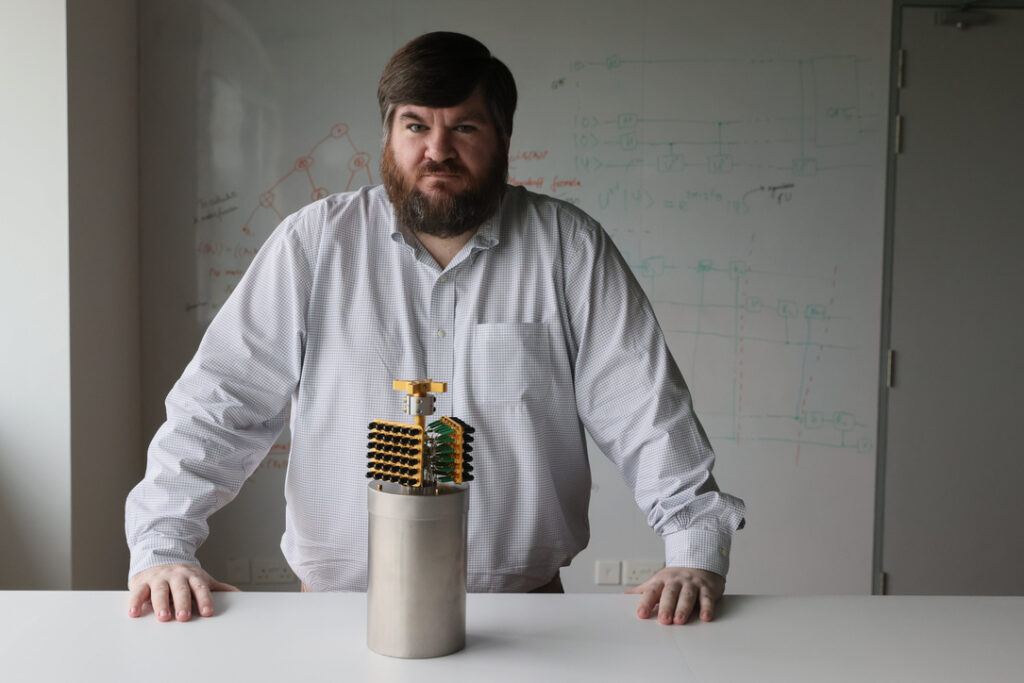




![What is Quantum Chess [The Rules and How to Play Guide]](https://thequantuminsider.com/wp-content/uploads/2023/10/What-is-Quantum-Chess-1024x684.png)
